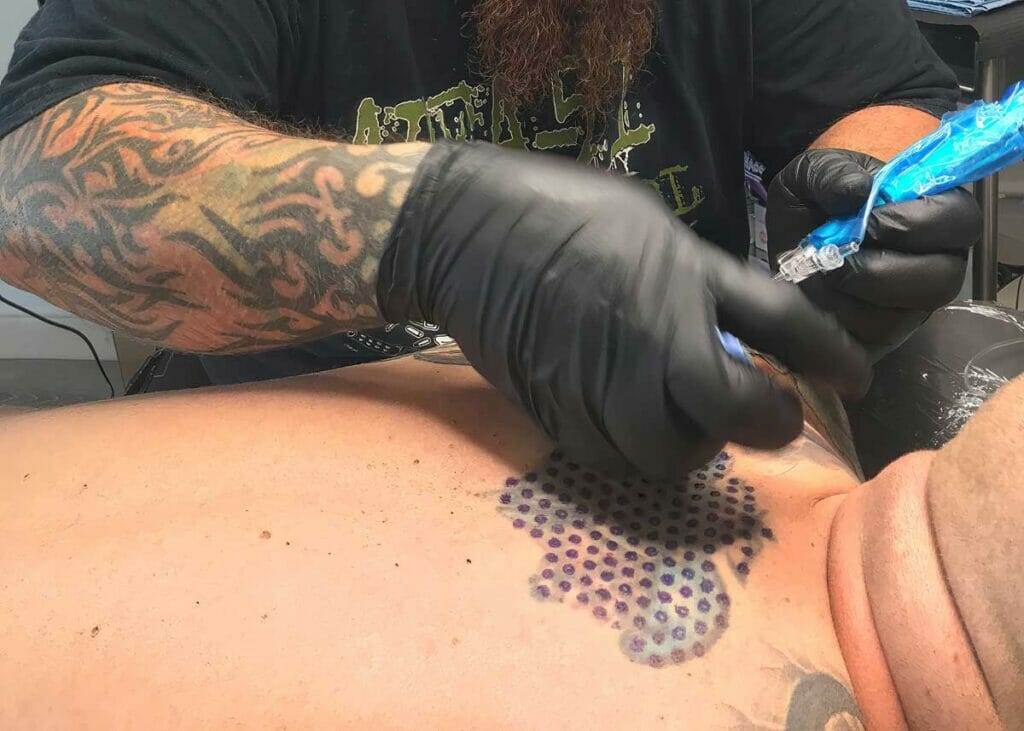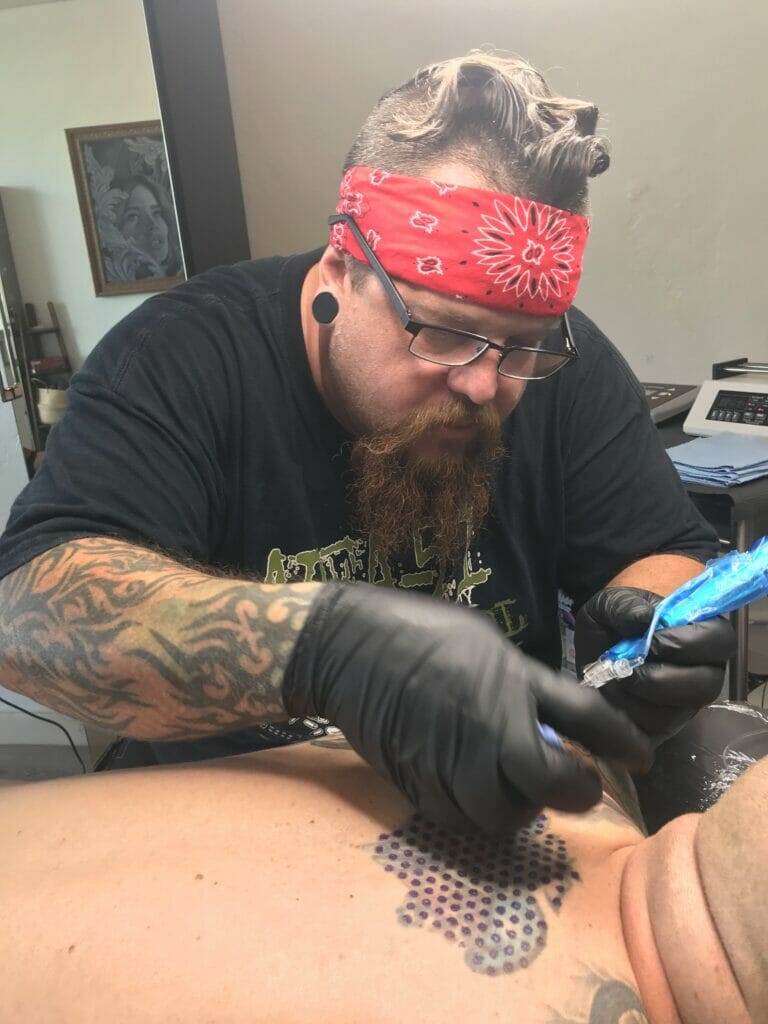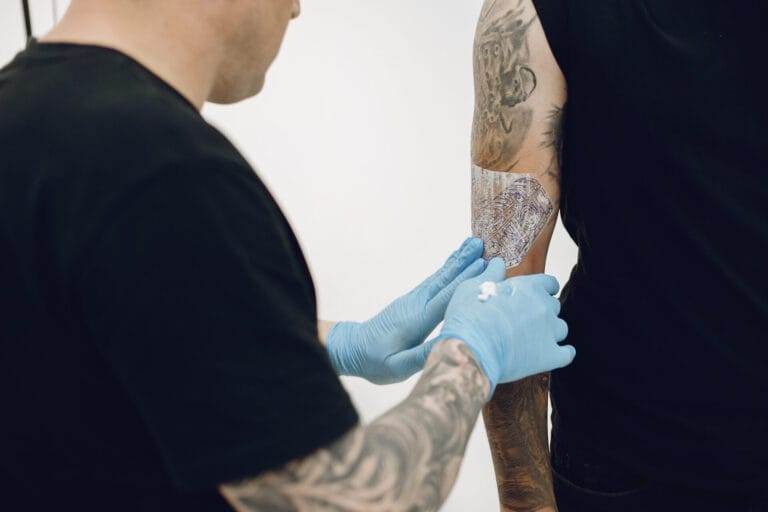In recent years, there has been a significant increase in the popularity of tattoo removal. What was once considered a permanent mark on the skin is now being erased by individuals for various reasons. Whether it’s a change in personal taste, a desire to remove a reminder of a past relationship, or the need to improve job prospects, people are choosing to remove their tattoos. This growing trend has led to advancements in tattoo removal technology and an increase in the number of qualified specialists offering these services.
Understanding the Science Behind Tattoo Removal
To understand how tattoo removal works, it’s important to first understand how tattoos are made. When a tattoo is applied, ink is injected into the dermis, the second layer of skin. The ink particles are too large for the body’s immune system to remove naturally, which is why tattoos are considered permanent.
Tattoos are difficult to remove because the ink particles are trapped deep within the skin. However, tattoo removal methods aim to break down these ink particles so that they can be eliminated by the body’s immune system. The immune system plays a crucial role in tattoo removal as it recognizes the fragmented ink particles as foreign substances and works to eliminate them from the body.
The Different Methods of Tattoo Removal: Pros and Cons
There are several methods available for tattoo removal, each with its own pros and cons. Chemical peels involve applying a solution to the skin that causes the top layers to peel off, taking some of the tattoo ink with them. Dermabrasion involves using a high-speed rotary device to remove the top layers of skin, again taking some of the tattoo ink with it. Surgical excision involves cutting out the tattooed skin and stitching the remaining skin back together.
However, laser tattoo removal is considered the most effective and least invasive method. It uses laser technology to break down the ink particles into smaller fragments that can be eliminated by the body’s immune system. Laser tattoo removal is a popular choice because it is relatively painless, requires fewer sessions compared to other methods, and has minimal scarring.
Laser Tattoo Removal: How Does it Work?
Laser tattoo removal works by targeting the tattoo ink with specific wavelengths of light. The laser energy is absorbed by the ink particles, causing them to heat up and shatter into tiny fragments. These fragments are then gradually eliminated by the body’s immune system over time.
The process of laser tattoo removal typically involves multiple sessions spaced several weeks apart. During each session, the specialist will use a handheld laser device to target the tattooed area. The number of sessions required depends on various factors such as the size and color of the tattoo, as well as the individual’s skin type.
The benefits of laser tattoo removal include its effectiveness in removing tattoos of all colors, its ability to target specific areas without affecting the surrounding skin, and its minimal risk of scarring compared to other methods.
Preparing for the Tattoo Removal Process: What to Expect

Before undergoing tattoo removal, it is important to schedule a consultation with the specialist to discuss your goals and expectations. During this consultation, the specialist will evaluate your tattoo and skin type to determine the best course of treatment.
In preparation for the tattoo removal process, the specialist may provide you with pre-treatment instructions. These instructions may include avoiding sun exposure, avoiding certain medications or skincare products, and shaving the area to be treated.
During the treatment, the specialist will use a handheld laser device to target the tattooed area. The laser pulses may feel like a rubber band snapping against the skin, but most people find the discomfort to be tolerable. The duration of each session depends on the size and complexity of the tattoo.
The Pain Factor: How to Manage Discomfort During Tattoo Removal
While laser tattoo removal is generally considered to be relatively painless, some individuals may experience discomfort during the treatment. Fortunately, there are several pain management options available to help minimize any discomfort.
One option is to apply a topical numbing cream to the tattooed area before the treatment. This cream helps to numb the skin and reduce any pain or discomfort during the laser session. Another option is to use a cooling device that blows cold air onto the skin during the treatment. This cooling device helps to numb the skin and make the procedure more comfortable.
To prepare for any potential pain or discomfort during tattoo removal, it is recommended to take over-the-counter pain relievers such as ibuprofen or acetaminophen before the treatment. It is important to follow any pre-treatment instructions provided by the specialist and communicate any concerns or discomfort during the treatment.
Aftercare: Caring for Your Skin Post-Tattoo Removal
After undergoing tattoo removal, it is important to follow post-treatment instructions provided by the specialist to ensure proper healing and minimize any potential complications.
These instructions may include keeping the treated area clean and dry, avoiding sun exposure, wearing sunscreen, and avoiding activities that may cause excessive sweating or friction on the treated area. It is also important to avoid picking at any scabs or blisters that may form during the healing process.
During the healing process, it is normal for the treated area to be red, swollen, and tender. This is a sign that the body’s immune system is working to eliminate the fragmented ink particles. It is important to be patient and allow the skin to heal naturally.
The Emotional Journey of Tattoo Removal: Coping with Regret and Moving Forward
Tattoo removal can be an emotional journey for many individuals. It is common for people to experience feelings of regret, sadness, or even anger during the process of removing a tattoo. It is important to acknowledge and validate these emotions and seek support if needed.
Coping with the emotional impact of tattoo removal can be challenging, but there are several strategies that can help. Talking to a trusted friend or family member about your feelings can provide a sense of relief and support. Seeking professional counseling or therapy can also be beneficial in processing and managing these emotions.
Moving forward after tattoo removal involves accepting and embracing the decision to remove the tattoo. It may be helpful to focus on the positive aspects of removing the tattoo, such as feeling more confident or being able to pursue certain career opportunities. Engaging in self-care activities such as exercise, meditation, or hobbies can also help in the healing process.
Cover-Up Options: Transforming Your Tattoo into Art
For those who still want to have a tattoo but no longer want their existing one, cover-up tattoos are a popular option. A cover-up tattoo involves designing a new tattoo that incorporates and hides the existing one.
There are several options for covering up a tattoo, depending on the size, color, and complexity of the existing tattoo. A skilled tattoo artist can work with you to design a cover-up tattoo that suits your preferences and effectively hides the original tattoo.
Cover-up tattoos can be a great way to transform a tattoo into a work of art. They allow individuals to express themselves creatively while also addressing any regrets or dissatisfaction with their previous tattoo.

The Importance of Making Informed Decisions about Tattoo Removal
In conclusion, the growing trend of tattoo removal highlights the importance of making informed decisions about the process. Understanding the science behind tattoo removal and the different methods available can help individuals choose the most suitable option for their needs.
Choosing a qualified tattoo removal specialist is crucial to ensure safe and effective results. Proper preparation and aftercare are also important in achieving optimal outcomes and minimizing any potential complications.
The emotional journey of tattoo removal should not be overlooked, and individuals should seek support if needed. Cover-up options provide an alternative for those who still want to have a tattoo but no longer want their existing one.
By making informed decisions about tattoo removal, individuals can confidently move forward and embrace their new chapter without the burden of an unwanted tattoo.






